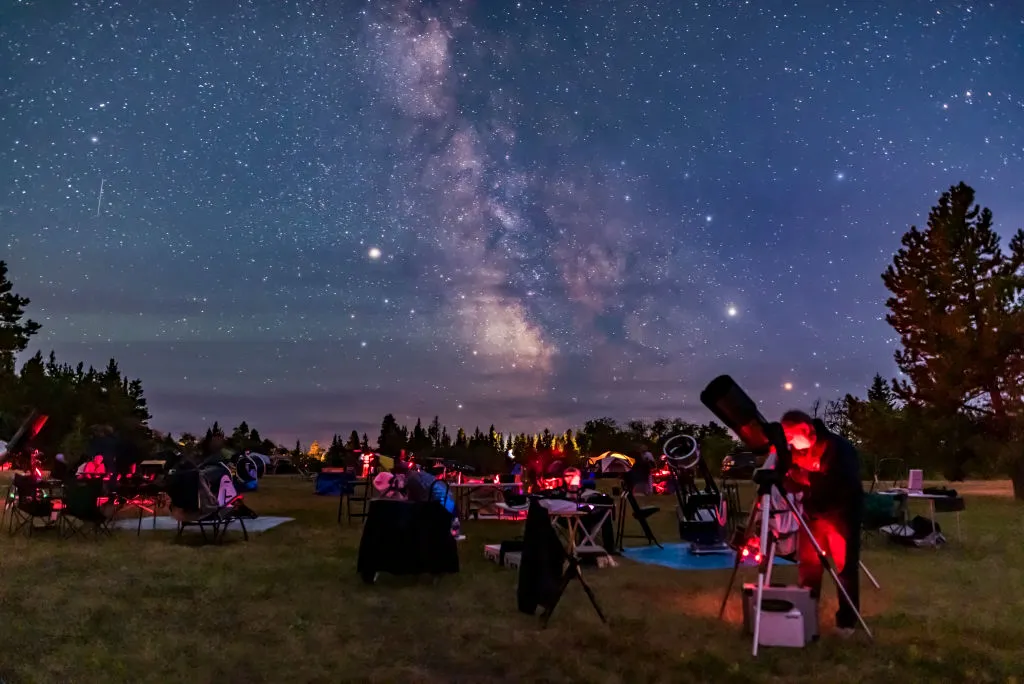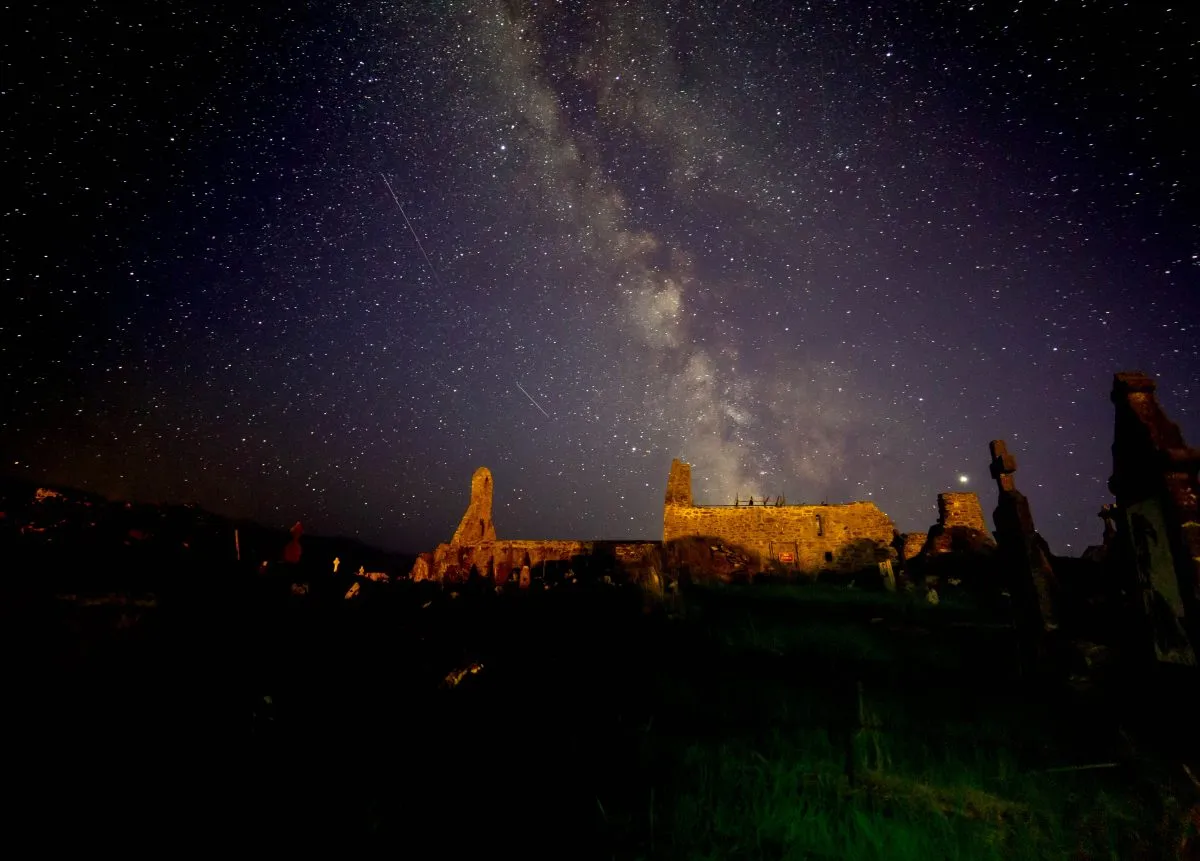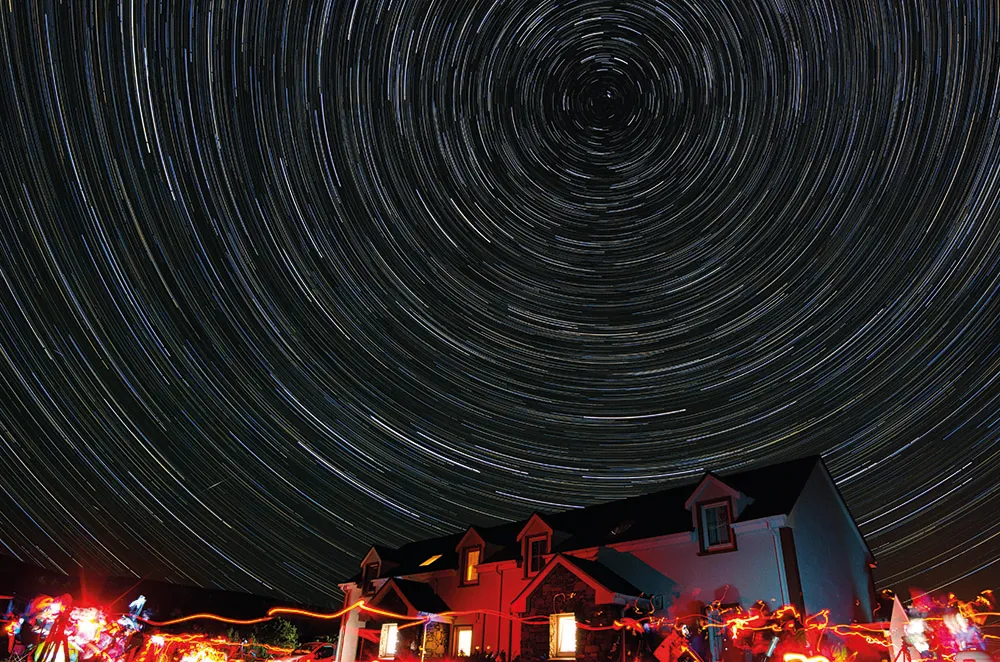Have you ever been to a star party?
There are lots of astronomy star parties in the UK and Ireland that take place annually, and they are very popular among amateur astronomers
Many astronomers spend the majority of their time alone, either studying the night sky or learning about it.
However, there is one sure-fire way to learn more quickly and to get more out of astronomy, and that's to share the experience.
Cue the star party, an annual (or more regular) observing event where like-minded people get together to share their interests and, very often, their eyepieces.

Like astronomers, star parties come in all shapes and sizes and there is no hard-and-fast definition.
“The term ‘star party’ is used generally for many types of astronomy events and gatherings,” says Kevin Smith, who helps organise the Skellig Star Party at the fabulous Dark Sky Reserve in County Kerry, Ireland every August.
However, most have a purpose or theme and it’s important to look up the event on the internet and social media to get a feel for what you are likely to experience before signing up.
For example, local astronomy clubs often hold monthly stargazing sessions that are frequently called ‘star parties’.
Check your local amateur astronomy society and see whether they host any such events
At the other end of the spectrum, there are star parties that go on for days or even as long as a week in some of the darkest parts of the UK and Ireland.
Even those events can vary, with some aimed at experienced amateur astronomers wanting to do some serious observing, and others more relaxed and focused on astronomy for beginners.

“Some star parties have been running for years, so it’s good to ask people who may have attended them before,” says Smith.
“Star parties are an in-depth crash course in astronomy,” says Ralph Wilkins, one of the organisers of AstroCamp, the biannual star party in the Brecon Beacons.
“You can learn what’s in the night sky, what to find and get help finding an object. Star parties stop people from failing with telescopes, but also you get to know new people.”
It's that idea of ‘social astronomy’ that inspired the creation of AstroCamp in the first place.
“We’ve got a common area where all the telescopes are set up, and anyone can come along and spend the evening just wandering around from telescope to telescope, asking questions,” says Wilkins.

When do star parties happen?
Most star parties have their origin in local astronomy clubs holding an annual event to do some observing.
Occasionally they may coincide with an astronomical event such as a meteor shower, but often they’re timed simply to take advantage of the dark skies around new Moon.
There tend not to be many star parties in the middle of summer because there are fewer hours of darkness.
With longer nights as well as seasonal views of the Milky Way, spring and autumn are the most popular times for star parties.
There’s a common misconception that you must have a telescope to attend a star party.
Not so, says Smith: “People should be encouraged to turn up without a telescope and made to feel welcome if they don’t have one.
"Most of our repeat attendees are people who turned up for the first time without a telescope or any astronomy knowledge.”
Star party dos and don'ts
Do
- Bring a warm jacket, hat and underwear (clear nights are cold)
- Use a red-light torch (pointed downwards) to preserve dark-adapted vision
- Take care around telescopes
- Bring a telescope and/or binoculars if you have them
- Socialise and share an eyepiece
- Bring and share drinks and snacks
- Have money for buying accessories from on-site sellers
- Be prepared for a wet weekend
Don't
- Shine white lights and torches after dark
- Leave laptops and smartphones unattended
- Drive a car or turn on headlights after dark
- Look through a telescope without permission (it may be for astrophotography)
- Make a lot of noise at night or early in the morning

Telescopes at star parties
If you have a telescope, bring it along, but you won’t be expected to.
In fact, if you are confused about telescopes, need some buying advice or just want to look through a telescope for the first time, there is no better place for you than a star party.
“You don’t need a scope for your first star party. It’s better to go to one to get some idea of what’s out there and what’s value for money,” says Alan Beech, an amateur astronomer from Manchester and star party regular.
“There will be plenty of educated people there willing to give you sound advice.”
Star parties are such good places to audition telescopes that it is likely if you do turn up to your first one with a brand-new telescope, you’ll leave wishing you’d spent your money on something else.
“Newcomers to astronomy can trawl the internet endlessly for clues, but nothing can beat putting your eye up to an eyepiece and seeing for yourself,” says Neil Hawkins, owner of Tring Astronomy Centre, who attends many star parties.
“A star party gives you the chance to see and try not just one, but usually 50 or more telescopes all operated by expert enthusiasts, usually very willing to help.”
However, if you do end up sharing an eyepiece with someone for a few hours, it’s polite to share something back. A beer or snack always goes down well.

Astrophotography at star parties
Astrophotography has become a huge trend among amateur astronomers, so it’s no surprise that star parties are responding to demand.
“We have seen a phenomenal growth in astrophotography," says Smith.
But the popularity of astrophotography does mean a few ‘new’ rules for star parties that perhaps haven’t been important until recently.
“An astrophotographer does not want streaks of red light from torches in their wide-field images, so they often locate themselves in a different area to observers. Laser pointers may also be deemed inappropriate,” explains Smith.
Other than that, star party etiquette is little more than keeping light to an absolute minimum, using red torches to avoid spoiling other people’s dark-adapted vision, and being polite.
Above all, first‑timers should not allow themselves to feel out of place.
“We know a lot of people are nervous the first time they come along to a star party,” says Wilkins. “Especially if you come alone, there is a fear you could be isolated.”
However, in practice that‘s really not how star parties work.
“Don’t feel intimidated about going to your first star party, even if you’re alone, because astronomers are a really friendly bunch of people who are really passionate,” says Wilkins.
“A star party is the best way to immerse yourself in astronomy.”
